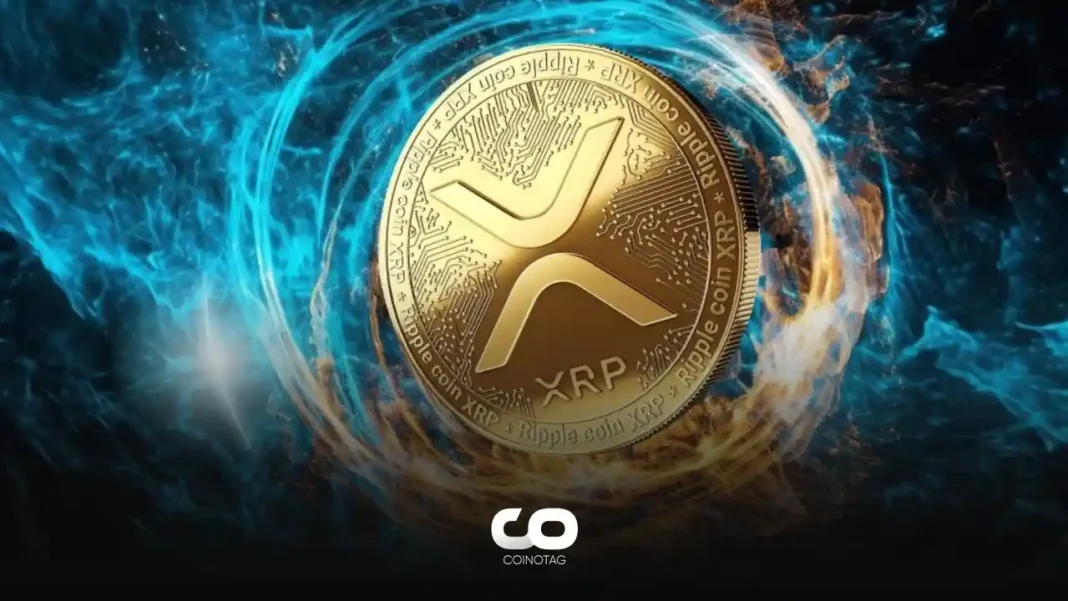| COINOTAG recommends • Exchange signup |
| 💹 Trade with pro tools |
| Fast execution, robust charts, clean risk controls. |
| 👉 Open account → |
| COINOTAG recommends • Exchange signup |
| 🚀 Smooth orders, clear control |
| Advanced order types and market depth in one view. |
| 👉 Create account → |
| COINOTAG recommends • Exchange signup |
| 📈 Clarity in volatile markets |
| Plan entries & exits, manage positions with discipline. |
| 👉 Sign up → |
| COINOTAG recommends • Exchange signup |
| ⚡ Speed, depth, reliability |
| Execute confidently when timing matters. |
| 👉 Open account → |
| COINOTAG recommends • Exchange signup |
| 🧭 A focused workflow for traders |
| Alerts, watchlists, and a repeatable process. |
| 👉 Get started → |
| COINOTAG recommends • Exchange signup |
| ✅ Data‑driven decisions |
| Focus on process—not noise. |
| 👉 Sign up → |
- Yield platform Pendle Finance has seen explosive growth, reaching a $4 billion total value locked (TVL) and surpassing $10 billion in trading volume.
- Pendle’s innovative approach lets users trade yields separately from underlying assets, attracting significant interest around liquid staking tokens.
- Analysts cite Pendle’s point farming strategies and partnerships with protocols like EtherFi and Ethena as key drivers of this success.
Discover the factors propelling Pendle Finance’s rapid rise, the implications for the DeFi landscape, and expert analysis on the platform’s growth trajectory.
Pendle’s Unique Approach Fuels DeFi Growth
Pendle Finance is making waves in the decentralized finance sector with its unique yield-splitting mechanism. By allowing users to trade yields separately from their underlying assets, Pendle has captured substantial investor interest, driving impressive growth metrics.
Ethereum Restaking and Ethena Integration
Pendle’s surge is closely tied to the popularity of liquid staking protocols for Ethereum like EtherFi and Renzo. The platform’s integration with synthetic dollar protocol Ethena has also boosted its TVL.
Expert Insights: Growth Drivers and Future Outlook
“Pendle’s point farming strategies…allow airdrop farmers to lever up…for prominent restaking protocols,” explains George Calle, Head of Research at The Block. Pendle’s CEO, known as TN, emphasizes a user-centric approach for future development.
| COINOTAG recommends • Professional traders group |
| 💎 Join a professional trading community |
| Work with senior traders, research‑backed setups, and risk‑first frameworks. |
| 👉 Join the group → |
| COINOTAG recommends • Professional traders group |
| 📊 Transparent performance, real process |
| Spot strategies with documented months of triple‑digit runs during strong trends; futures plans use defined R:R and sizing. |
| 👉 Get access → |
| COINOTAG recommends • Professional traders group |
| 🧭 Research → Plan → Execute |
| Daily levels, watchlists, and post‑trade reviews to build consistency. |
| 👉 Join now → |
| COINOTAG recommends • Professional traders group |
| 🛡️ Risk comes first |
| Sizing methods, invalidation rules, and R‑multiples baked into every plan. |
| 👉 Start today → |
| COINOTAG recommends • Professional traders group |
| 🧠 Learn the “why” behind each trade |
| Live breakdowns, playbooks, and framework‑first education. |
| 👉 Join the group → |
| COINOTAG recommends • Professional traders group |
| 🚀 Insider • APEX • INNER CIRCLE |
| Choose the depth you need—tools, coaching, and member rooms. |
| 👉 Explore tiers → |
Pendle’s Expanding Ecosystem
While primarily focused on Ethereum, Pendle is gaining traction on Layer 2 solutions like Arbitrum and Mantle. This expansion could further increase accessibility and trading volume.
Points Trading: Innovation and Risk
Pendle’s innovative “points trading” allows users to hedge or leverage potential airdrop rewards. It’s worth noting that this strategy carries inherent risks due to the uncertainty surrounding airdrops.
| COINOTAG recommends • Exchange signup |
| 📈 Clear interface, precise orders |
| Sharp entries & exits with actionable alerts. |
| 👉 Create free account → |
| COINOTAG recommends • Exchange signup |
| 🧠 Smarter tools. Better decisions. |
| Depth analytics and risk features in one view. |
| 👉 Sign up → |
| COINOTAG recommends • Exchange signup |
| 🎯 Take control of entries & exits |
| Set alerts, define stops, execute consistently. |
| 👉 Open account → |
| COINOTAG recommends • Exchange signup |
| 🛠️ From idea to execution |
| Turn setups into plans with practical order types. |
| 👉 Join now → |
| COINOTAG recommends • Exchange signup |
| 📋 Trade your plan |
| Watchlists and routing that support focus. |
| 👉 Get started → |
| COINOTAG recommends • Exchange signup |
| 📊 Precision without the noise |
| Data‑first workflows for active traders. |
| 👉 Sign up → |
Conclusion
Pendle’s rapid ascent underscores the growing demand for yield-generating strategies in DeFi. Its success offers insights into the evolving DeFi landscape and the potential of protocols that cater to sophisticated yield optimization needs.
| COINOTAG recommends • Members‑only research |
| 📌 Curated setups, clearly explained |
| Entry, invalidation, targets, and R:R defined before execution. |
| 👉 Get access → |
| COINOTAG recommends • Members‑only research |
| 🧠 Data‑led decision making |
| Technical + flow + context synthesized into actionable plans. |
| 👉 Join now → |
| COINOTAG recommends • Members‑only research |
| 🧱 Consistency over hype |
| Repeatable rules, realistic expectations, and a calmer mindset. |
| 👉 Get access → |
| COINOTAG recommends • Members‑only research |
| 🕒 Patience is an edge |
| Wait for confirmation and manage risk with checklists. |
| 👉 Join now → |
| COINOTAG recommends • Members‑only research |
| 💼 Professional mentorship |
| Guidance from seasoned traders and structured feedback loops. |
| 👉 Get access → |
| COINOTAG recommends • Members‑only research |
| 🧮 Track • Review • Improve |
| Documented PnL tracking and post‑mortems to accelerate learning. |
| 👉 Join now → |







